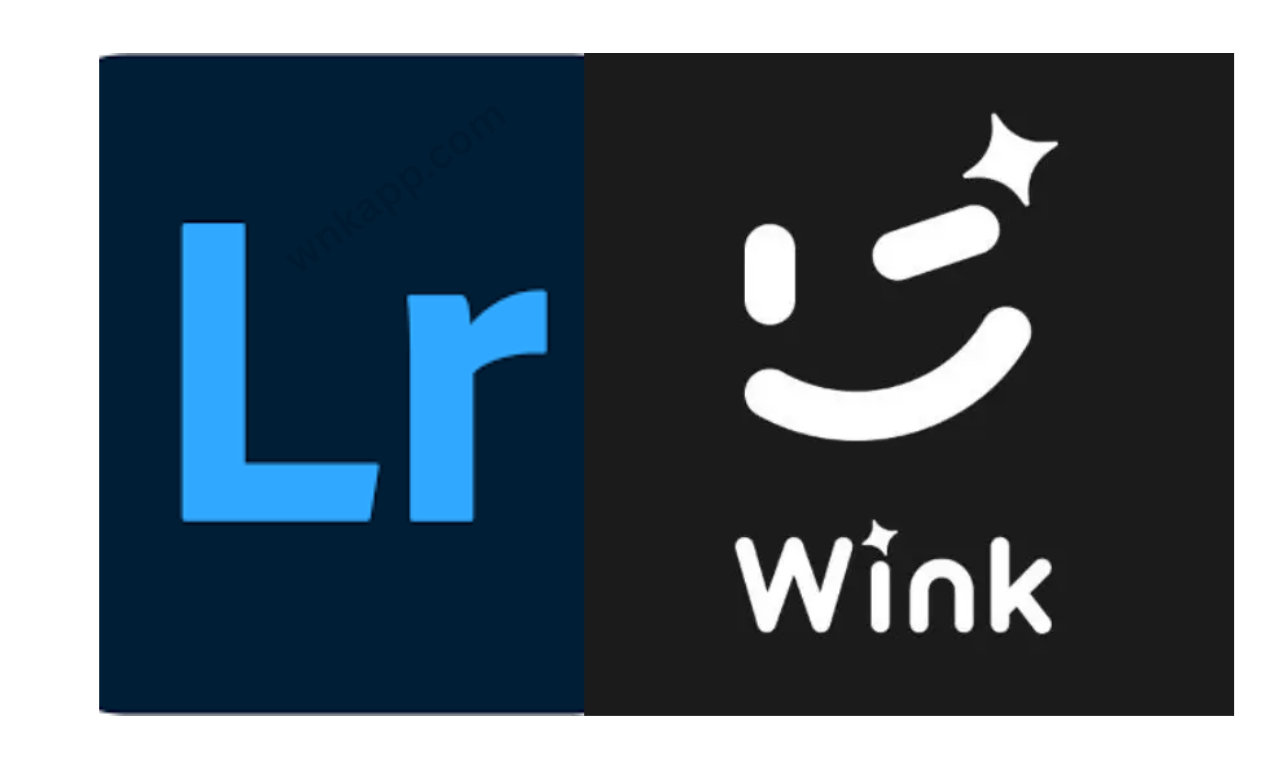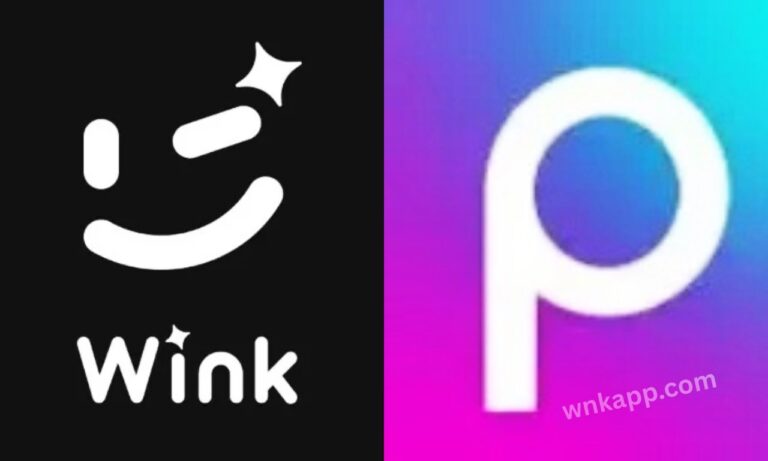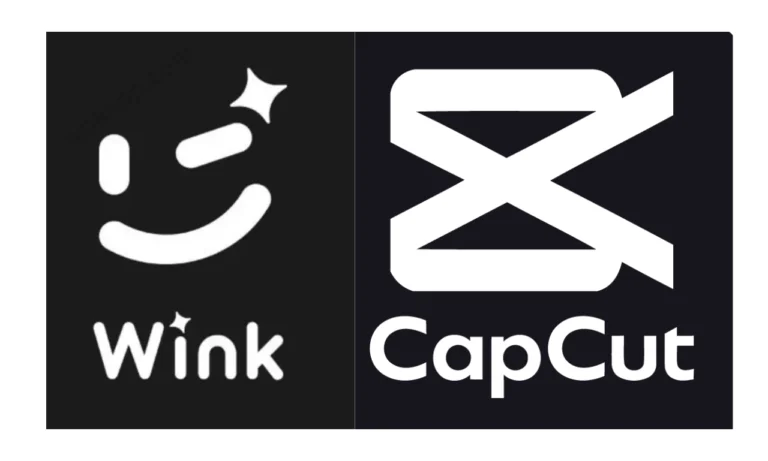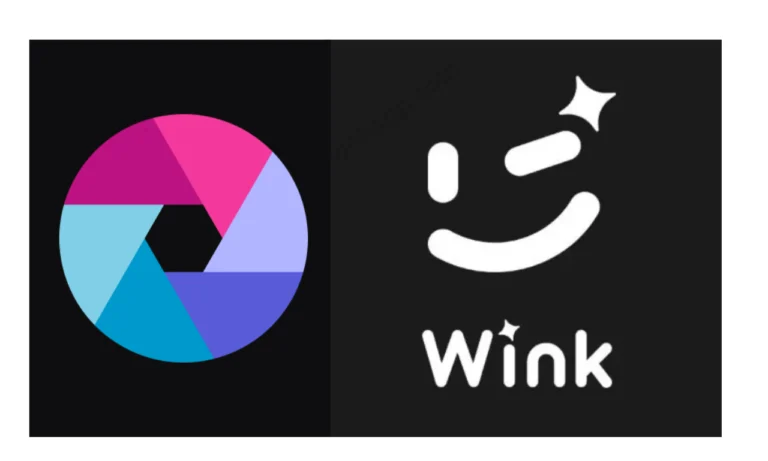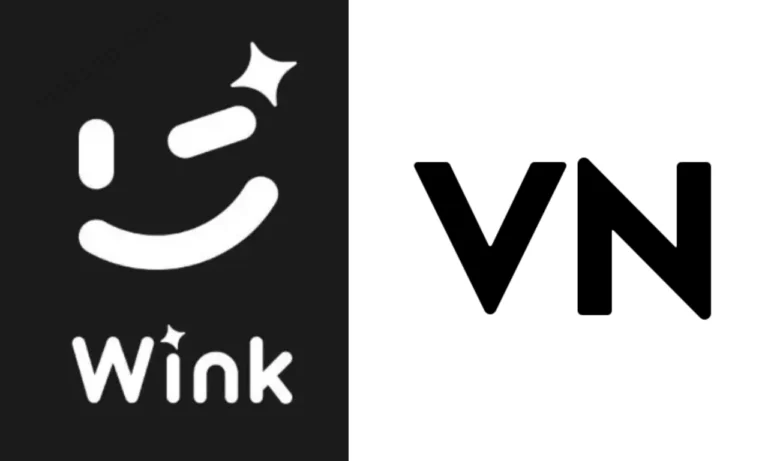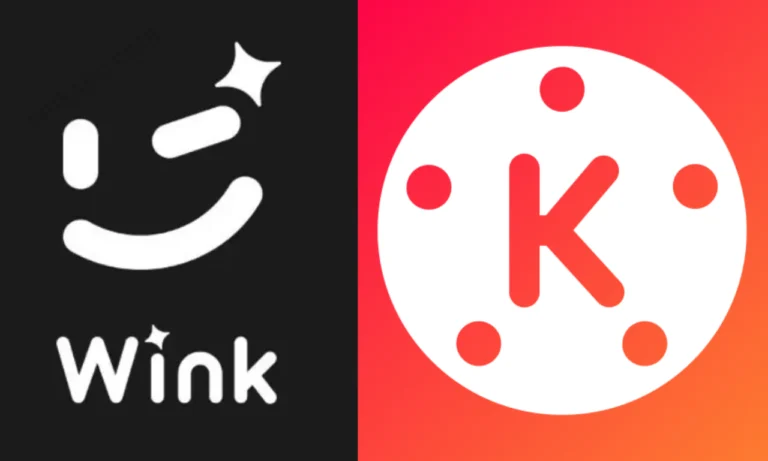Wink vs Lightroom 2025: Which One Is Best?
Preface In the fast- paced world of digital content creation, editing tools play a pivotal part in shaping visual stories. Whether you’re a shooter, influencer, marketer, or layman, choosing the right app is essential for streamlining your creative workflow. In 2025, two of the most talked- about editing tools are Wink and Lightroom.
While Wink specializes in AI- powered videotape advancements and retouching, Lightroom, developed by Adobe, remains a gold standard for professional print editing and color correction. But which one is better for your requirements in 2025? This comprehensive companion compares Wink vs Lightroom grounded on features, ease of use, performance, pricing, use cases, and AI capabilities to help you make the stylish decision.
What is Wink?
Wink is an advanced AI-powered video enhancer app that has taken the world of short-form content by storm in 2025. Designed for creators who prioritize speed, simplicity, and real-time results, Wink allows users to transform ordinary videos into professionally retouched visuals with minimal effort. The app caters primarily to influencers, vloggers, content creators, and digital marketers who need to produce polished content quickly for platforms like TikTok, Instagram Reels, YouTube Shorts, and more.
Core Purpose of Wink
Wink’s core function is to enhance videos automatically using artificial intelligence. It smooths skin, corrects lighting, stabilizes footage, enhances facial details, and even adds stylistic filters—all with a few taps. Unlike traditional editors that require frame-by-frame adjustments, Wink relies on smart algorithms that detect key elements in your video and apply enhancements intelligently.
Key Features of Wink in 2025
- AI Face Retouching: Automatically removes blemishes, smooths skin, and brightens eyes while maintaining a natural look.
- 4K Video Export: Export videos in ultra-high-definition without watermarks—even in the free version.
- One-Tap Filters & Presets: Apply trendy visual styles instantly.
- Background Replacement (Green Screen): Use built-in AI to replace video backgrounds, even without a physical green screen.
- Auto Lighting Correction: Enhances brightness, contrast, and saturation in poorly lit videos.
- Real-Time Previews: See AI enhancements live before you export.
- No Learning Curve: Designed for beginners, Wink has a clean, touch-friendly interface that simplifies the editing process.
- Fast Processing on Mid-Range Devices: Optimized to run smoothly even on non-flagship phones.
Platforms Supported
Wink is currently available on Android devices, with limited versions available for iOS. Some users also access Wink on PC using Android emulators such as BlueStacks or LDPlayer.
Who Should Use Wink?
- Social media influencers
- Content creators on short-form video platforms
- Beginners looking for instant AI enhancements
- Professionals who need fast, polished content without detailed manual editing
- Users who want watermark-free, high-resolution output without paying for a subscription
Wink has rapidly become a go-to app in the age of automated content creation. Its real-time AI power, beginner-friendly design, and focus on video enhancement make it a strong contender against more traditional tools like Lightroom—especially for creators prioritizing speed over complexity.
What is Lightroom?
Lightroom is a professional photo editing software developed by Adobe, designed to help users enhance and organize their images with precision. Unlike basic editing apps, Lightroom offers powerful tools for adjusting lighting, color balance, sharpness, and more—all without damaging the original photo. It supports high-resolution image formats, including RAW files, and provides creative flexibility for photographers and visual artists. With its intuitive interface and cloud-based features, Lightroom is ideal for both beginners and professionals who want consistent, high-quality results across all their devices.
Core Purpose of Lightroom
Lightroom is designed to edit and enhance photos with fine control over exposure, contrast, shadows, highlights, white balance, and other elements. It’s perfect for creators who want to craft their visuals with intentional adjustments rather than relying on AI presets. Lightroom is used by professional photographers, digital artists, and advanced content creators who require the highest level of customization and image quality.
Key Features of Lightroom in 2025
Non-Destructive Editing: All edits are stored separately from the original image, allowing users to revert changes anytime.
Advanced Color Grading: Fine-tune hue, saturation, and luminance across specific color ranges.
Selective Adjustments: Apply edits to specific areas of an image using masks, gradients, and brushes.
RAW File Support: Edit high-quality RAW images from DSLR or mirrorless cameras.
AI-Powered Tools: In recent versions, Lightroom has introduced AI-based features like subject masking and sky replacement.
Presets & Batch Editing: Apply custom looks across multiple photos with one click.
Professional Export Settings: Fine control over resolution, format, metadata, and color profiles
Platforms Supported
Lightroom is available on Windows, macOS, iOS, Android, and even as a web app. Its cross-platform flexibility allows professionals to start editing on one device and continue seamlessly on another.
Who Should Use Lightroom?
- Professional and hobbyist photographers
- Designers working with high-resolution images
- Visual content creators who focus on photo editing
- Users who want maximum control over editing
- Those who work with RAW files or DSLR images
- Teams or professionals using Adobe’s Creative Cloud suite
While Lightroom is primarily built for image editing, many content creators use it alongside tools like Photoshop and Premiere Pro to develop a complete creative workflow.
Feature Comparison Wink vs Lightroom
Choosing between Wink and Lightroom depends heavily on your creative needs, whether you’re working with videos or high-resolution photos. Below is a feature-by-feature breakdown to help you understand how both tools stack up in 2025.
1. User Interface
- Wink: Wink boasts a minimalist, mobile-friendly interface designed for fast video enhancements. It prioritizes ease of use, with large buttons, real-time previews, and preset AI options. Beginners can edit within seconds without a steep learning curve.
- Lightroom: Lightroom’s interface is more comprehensive and tailored for photo professionals. It includes sliders, advanced panels, and multiple viewing modes. While more complex, it offers deep editing precision once you’re familiar with it.
2. Editing Capabilities
- Wink: It’s perfect for short-form content like TikToks and Instagram Reels.
- Lightroom: Lightroom excels in photo editing. Its non-destructive editing allows users to adjust exposure, white balance, contrast, saturation, and sharpness without altering the original file. It also offers gradient filters, curves, color grading, and healing tools.
3. AI Integration
- Wink: AI is the backbone of Wink. It automates almost every enhancement—from facial retouching to background blur—making it ideal for creators who want polished results quickly.
- Lightroom: Lightroom integrates Adobe Sensei, Adobe’s AI engine, to automate tasks like sky replacement, subject selection, and intelligent masking. It saves time while maintaining high editing quality.
4. Export Quality
- Wink: It also removes watermarks without needing a subscription, which is rare among mobile editors.
- Lightroom: Known for high-quality photo exports, Lightroom supports multiple file formats, including RAW, JPEG, TIFF, and DNG. It allows custom export settings like resolution, compression, and watermarking.
5. Platform Availability
- Wink: Primarily available on Android, with some access on iOS. Desktop versions are limited or only available through emulators.
- Lightroom: Cross-platform support is one of Lightroom’s strengths. It runs smoothly on Windows, macOS, Android, iOS, and offers cloud syncing between devices.
6. Community and Templates
- Wink: Wink doesn’t have a built-in community or marketplace. It focuses on editing only, not social engagement.
- Lightroom: Lightroom users benefit from Adobe’s massive creative community. There are thousands of presets, tutorials, and cloud-based templates for all types of photography.
7. Learning Curve
- Wink: Designed for beginners, Wink requires almost no learning curve.
- Lightroom: Has a steeper learning curve but offers greater creative control. Ideal for users willing to invest time in learning photography fundamentals.
8. Subscription and Cost
- Wink: Offers free access with optional upgrades. No monthly fees are required for watermark-free exports and basic features.
- Lightroom: Requires a subscription as part of Adobe’s Creative Cloud. Plans typically include cloud storage and access to Adobe Photoshop, but costs are higher compared to Wink.
9. Use Case Suitability
- Wink: Best for influencers, vloggers, and content creators focused on short-form video content and facial enhancements.
- Lightroom: Best for photographers, marketers, and visual designers who require detailed control over image aesthetics and output.
User Interface & Ease of Use
Its clean, mobile-first interface is highly intuitive, allowing even first-time users to start editing videos within seconds. With one-tap enhancements, sliding controls, and real-time previews, Wink removes the complexity of video editing, making it ideal for influencers, vloggers, and casual content creators. On the other hand, Lightroom offers a more advanced and professional-grade interface.
Designed primarily for photographers and creative professionals, it features detailed sliders, panels, and customizable workspaces. While powerful, Lightroom can feel overwhelming to beginners due to its technical nature and variety of options. However, once mastered, it provides unmatched control and precision for editing high-resolution photos. In short, Wink is easier for quick video edits, while Lightroom offers a deeper, but steeper, photo editing experience.
AI Technology & Automation
In 2025, AI technology plays a central role in both Wink and Lightroom, but their approaches are fundamentally different. Wink uses AI primarily for automated video enhancement, making it perfect for users who want instant results without complex manual editing. Its AI can smooth skin, enhance lighting, stabilize shaky footage, and even apply creative effects like green screen removal—all with a single tap. This hands-free experience makes Wink incredibly appealing to social media creators who prioritize speed and visual polish.
Lightroom, by contrast, incorporates AI for intelligent photo editing assistance. Adobe’s Sensei AI engine powers features like automatic subject selection, sky replacement, and content-aware adjustments. It helps streamline workflows without removing the photographer’s control. Lightroom’s AI is more about supporting your creative decisions, offering suggestions and quick fixes that professionals can fine-tune further.
Editing Capabilities
When it comes to editing capabilities, Wink and Lightroom cater to very different creative needs. Wink specializes in video retouching and enhancement, using AI-powered tools that automatically beautify facial features, smooth out skin textures, brighten lighting, and stabilize shaky video footage. It also includes advanced options like green screen background replacement, AI subtitle generation, and video noise reduction. However, Wink’s editing scope is limited mostly to video and lacks fine manual controls or deep-layer editing features.
On the other hand, Lightroom is a powerhouse for photo editing, offering precise manual adjustments, non-destructive editing, and RAW file support. Users can fine-tune exposure, contrast, sharpness, color balance, highlights, shadows, and more using sliders and masks. While its video editing tools are limited, Lightroom excels in offering professional-grade control over still images.
In short, Wink is the go-to for fast, AI-enhanced video edits, while Lightroom is unmatched for detailed photo refinement.
Performance & Export Quality
In 2025, both Wink and Lightroom offer solid performance, but their strengths differ based on how they process and export media. Wink is optimized for mobile devices and short-form video creation. It uses lightweight AI technology that allows users to edit and export videos quickly, even on mid-range smartphones. The export quality is typically up to Full HD (1080p), with options for aspect ratio adjustments, frame rate control, and file compression to suit platforms like TikTok, Instagram, or YouTube Shorts. However, because it focuses on speed and convenience, Wink may occasionally sacrifice some finer detail in video quality during compression.
Lightroom, in contrast, is built for high-performance editing on both mobile and desktop. It’s designed to handle large RAW image files and perform detailed rendering without lag—especially on devices with strong GPUs or CPUs. Lightroom maintains lossless quality during editing and allows export in multiple formats like JPEG, TIFF, DNG, and more. Photographers can choose specific resolution, color space, and DPI settings to meet print or web standards, ensuring maximum image fidelity.
In summary, Wink delivers fast, social-media-ready exports with decent quality, while Lightroom focuses on preserving every pixel for professional-grade imagery, making it ideal for those who need full control over export output.
Platform Compatibility
When it comes to platform compatibility in 2025, Wink and Lightroom serve different user bases. Wink is primarily designed as a mobile-first application, with robust support for Android devices and limited availability for iOS. It is optimized for smartphones and tablets, making it ideal for content creators who prefer editing on the go. Although there’s no official desktop version of Wink, some users rely on Android emulators like BlueStacks or LDPlayer to use it on PC. However, this workaround doesn’t offer the same level of stability or performance as a native app.
Lightroom, developed by Adobe, is a cross-platform powerhouse. It runs smoothly on Windows, macOS, Android, and iOS, allowing users to start a project on one device and finish it on another. Lightroom also integrates seamlessly with Adobe Creative Cloud, enabling synchronization of files and settings across multiple devices. Whether you’re editing from a desktop workstation or a mobile phone, Lightroom ensures a consistent user experience with access to the same core tools and cloud-based storage.
In essence, Wink is best suited for mobile content creators focused on quick video edits, while Lightroom caters to professionals who require seamless cross-device editing and desktop-class performance.
Pricing & Subscriptions
In 2025, Wink and Lightroom continue to follow distinctly different pricing models tailored to their target audiences. Users can enjoy video enhancement tools, AI filters, and even 4K exports without a watermark at no cost. However, Wink also offers optional in-app purchases and VIP upgrades, unlocking premium features like exclusive filters, advanced face retouching effects, and ad-free editing. Notably, Wink does not require a monthly subscription, making it highly appealing for casual users and influencers on a budget.
On the other hand, Adobe Lightroom operates under a subscription-based pricing model. As part of Adobe’s Creative Cloud suite, Lightroom offers various plans starting at a monthly fee, which typically includes cloud storage, desktop and mobile access, and regular software updates. Adobe also bundles Lightroom with Photoshop and other apps in its Photography Plan, which adds more value for professional users. However, the recurring cost might not suit hobbyists or creators who prefer one-time purchases.
To sum it up: Wink provides a freemium experience with optional upgrades, perfect for fast and affordable content creation. Lightroom, in contrast, is an investment for those seeking professional-grade editing tools, reliable cloud integration, and cross-platform functionality—but it comes at a recurring cost.
Use Cases: Influencers vs Photographers
The ideal user base for Wink and Lightroom varies significantly, reflecting the different needs of influencers versus professional photographers. Wink is designed with modern influencers and social media creators in mind. It offers one-tap beautification tools, AI-powered background removal, green screen effects, and auto-enhancements optimized for short-form content like Reels, TikToks, and YouTube Shorts. Its fast editing process, mobile-first design, and emphasis on video retouching make it the go-to choice for creators who prioritize speed, aesthetics, and simplicity without needing advanced technical skills.
In contrast, Lightroom is the preferred tool among photographers, digital artists, and creative professionals who require precision, flexibility, and total control over their visual output. It supports RAW image processing, histogram adjustments, lens corrections, and a non-destructive workflow that preserves image integrity. Lightroom users often work on high-resolution photography, client projects, print media, or brand campaigns that demand technical excellence and color accuracy.
In essence, Wink is perfect for influencers who want quick, beautiful, ready-to-share content, while Lightroom serves photographers who demand professional-grade editing, depth, and total creative control. The choice between the two depends on your platform, audience, and how hands-on you want to be with your edits.
Pros & Cons of Wink vs Lightroom in 2025
Wink Pros
Wink Cons
1-AI-Powered Video & Photo Enhancements
Wink is built around AI technology that automatically smooths skin, adjusts lighting, enhances facial features, and adds filters—making it perfect for quick, high-quality edits without much manual work.
2-4K Export Without Watermark (Free)
Unlike most apps, Wink allows 4K exports even in the free version, making it ideal for content creators who want to maintain quality without extra cost.
3-Green Screen & Background Remover
With built-in green screen support, Wink simplifies content creation for YouTubers and Reels creators who want immersive effects with minimal effort.
4-User-Friendly Interface
Wink is designed for speed and simplicity. Even first-time users can apply pro-level video retouching in just a few taps.
5-Optimized for Mobile
Wink is lightweight and optimized for mid-range Android devices, delivering fast rendering and export speeds without heavy RAM usage.
1-Limited Manual Editing Control
If you’re a user who prefers detailed edits—layer masking, brush control, or exposure tweaking—Wink may feel limiting due to its auto-based editing workflow.
2-Primarily Android-Only
iOS users have limited access to Wink, and many of the advanced features are exclusive to the Android version or modded APKs.
3-No Desktop or Cloud Syncing
Wink lacks cross-platform support, meaning no editing on desktop, tablets, or cloud-based sync with other devices.
4-Limited Community & Asset Library
Unlike Lightroom, Wink does not offer a large asset store, template hub, or user community for collaboration or inspiration.
Lightroom Pros
Lightroom Cons
1-Professional Photo Editing Tools
Lightroom is built for precision. With sliders for exposure, contrast, tone curves, HSL color grading, and masking, it gives complete control over every pixel.
2-Cloud Integration Across Devices
You can start editing a photo on your phone and continue on your laptop or tablet—thanks to seamless Adobe Creative Cloud syncing.
3-Batch Editing & Presets
Lightroom enables efficient editing with presets, batch processing, and AI-based subject detection, saving time while keeping quality intact.
4-Raw File Support
Lightroom handles RAW images from DSLR and mirrorless cameras, making it the go-to for photographers and visual professionals.
5-Cross-Platform Support
Available on Windows, macOS, iOS, Android, and web browsers, Lightroom is one of the most versatile tools for mobile and desktop editing.
- Learning Curve
Lightroom is not beginner-friendly. New users often need tutorials or training to unlock its full potential. - Subscription-Only Model
Unlike Wink, Lightroom operates on a monthly or annual subscription basis, which might not suit casual editors or hobbyists on a budget. - Primarily for Photos (Limited Video Tools)
Lightroom’s video editing capabilities remain minimal even in 2025. - Storage Limitations Without Upgrade
Adobe’s cloud storage comes with limits unless you pay for higher-tier plans—this can be a barrier for creators who work with high-resolution files daily.
Which One is Better for You in 2025?
Choosing between Wink and Lightroom in 2025 depends entirely on your creative needs, skill level, and long-term goals. Both tools are powerful, but they serve very different audiences and content formats.
Choose Wink If You Are
- A social media influencer or content creator focused on platforms like TikTok, Instagram, or YouTube Shorts.
- Interested in quick, AI-enhanced video or photo editing with little to no manual adjustments.
- Working mostly on a smartphone, especially Android, and want fast results without the learning curve.
- Focused on beauty, vlogs, lifestyle, or trending content that requires filters, skin smoothing, and green screen effects.
- Looking for a free or affordable editing solution with 4K export and minimal processing time.
Why Wink Wins
Its AI-based workflow, mobile optimization, and no-subscription model make Wink a game-changer for influencers who need speed, simplicity, and aesthetic results.
Choose Lightroom If You Are
- A professional photographer, blogger, or artist who values full control over image quality and detail.
- Someone working with RAW files, DSLR images, or in commercial photography environments.
- Comfortable navigating sliders, layers, presets, and other complex editing tools.
- Working across multiple platforms—desktop, tablet, and mobile—and needing cloud storage.
- Willing to invest in a subscription for professional-level features and Adobe’s reliability.
Why Lightroom Wins
Lightroom delivers unmatched photo editing power, precision tools, and long-term scalability—perfect for creatives with advanced needs or professional standards.
Frequently Asked Questions (FAQs)
1. Can I use both Wink and Lightroom together?
Yes! While Wink is great for quick social media-ready edits, Lightroom excels in detailed photo retouching. Many content creators edit the core image in Lightroom and then apply additional filters or AI enhancements in Wink to fit a specific aesthetic for Instagram, TikTok, or YouTube.
2. Is Wink available for iOS?
However, the developers have announced plans to release a stable iOS version soon. For now, iOS users may need to use Android emulators or wait for official support.
3. Is Lightroom better for beginners than Wink?
Not exactly. Lightroom is more suitable for users with a photography background or those willing to learn detailed editing techniques. Wink, on the other hand, offers a beginner-friendly interface and automatic edits through AI—perfect for non-tech-savvy users and influencers.
4. Which app is better for 4K video content—Wink or Lightroom?
Wink is better for 4K video editing because Lightroom is strictly a photo editing tool. If your focus includes video content for platforms like TikTok or Instagram Reels, Wink is the ideal option.
5. Can I edit RAW photos in Wink?
No, Wink is not designed for RAW photo processing. It works best with JPEG or standard image formats. If you shoot in RAW (e.g., DSLR or mirrorless cameras), Lightroom is the superior tool for preserving detail and making advanced adjustments.
6. Is there a watermark on Wink or Lightroom free versions?
Wink’s free version typically allows watermark-free exports, especially for standard edits. Lightroom’s mobile app has a limited free tier, but some features (like healing or masking) require a subscription. Also, watermarking is generally not applied unless you’re using Adobe Express templates.
7. Which software offers more AI tools in 2025?
Lightroom also includes AI (like subject detection and sky replacement), but it’s more manual and tailored for professional adjustments. So, if you’re after hands-free editing, Wink takes the lead.
8. Is Lightroom worth the subscription cost in 2025?
If you’re a professional photographer, social media manager, or design agency, then absolutely. Lightroom offers cloud storage, multi-device sync, and precise control. However, for casual users or creators on a budget, Wink might offer better value with no subscription required.
9. Does Wink support batch editing?
No, Wink currently does not support batch editing. Each photo or video must be edited individually. Lightroom, on the other hand, allows batch processing, making it highly efficient for photographers editing hundreds of files.
10. Which app is safer in terms of privacy and data?
Lightroom, being part of Adobe, follows strict data protection regulations. Wink is also safe if downloaded from trusted platforms or the official APK version—but avoid third-party modded versions, which may carry risks.
Conclusion
In 2025, choosing between Wink and Lightroom depends on what kind of creator you are. Wink is ideal for influencers and beginners who want fast, AI-powered video and photo editing with minimal effort. Lightroom, on the other hand, is better for professional photographers who need advanced control and detailed adjustments. Both tools have their strengths—Wink for speed and simplicity, Lightroom for precision and quality. Pick the one that best fits your creative style and editing needs.

